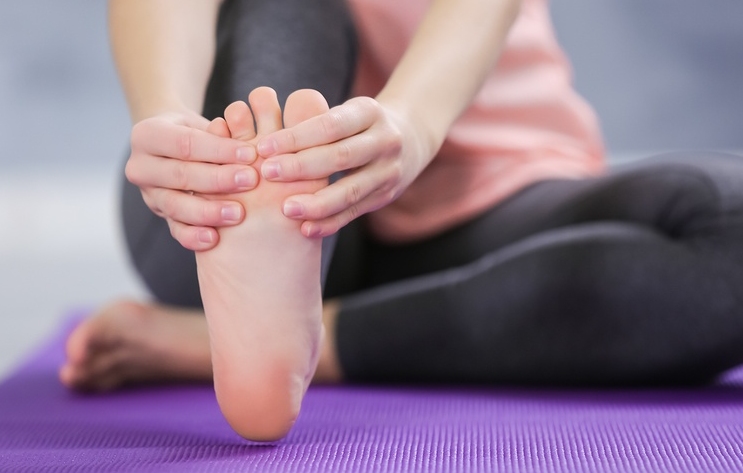Know Your Remedies: Magnesium Phosphoricum (Mag-p.)
 Common Names: Mag phos; magnesium phosphate. Magnesium Phosphoricum (Mag-p.) is a useful remedy for types of neuralgia (nerve pain), usually shooting or stabbing in nature, and cramps. Symptoms generally occur on the right side of the body, feel better for hard pressure or rubbing, and are worsened by cold air or bathing. Mental-emotional Symptoms
Common Names: Mag phos; magnesium phosphate. Magnesium Phosphoricum (Mag-p.) is a useful remedy for types of neuralgia (nerve pain), usually shooting or stabbing in nature, and cramps. Symptoms generally occur on the right side of the body, feel better for hard pressure or rubbing, and are worsened by cold air or bathing. Mental-emotional Symptoms
- Irritable and oversensitive.
Facial and Head Problems
- Right-sided nerve pain that worsens with cold air but improves with firm pressure or warmth.
Dental Problems
- Nerve pain in teeth worsened by cold air, compresses or liquids.
Abdominal Problems
- Colic or cramping which is relieved by firm pressure, warmth, rubbing or bending double.
Menstrual Problems
- Dysmenorrhoea (painful periods) which is relieved by warmth and firm pressure.
Limb Problems
- Cramps, especially of hands and fingers.
- Writer’s cramp.
- Sciatic pain which is relieved by heat and pressure.
For Pets
- Colic or cramping pain that improves with rubbing or warmth.
Where do I find it?
Mag Phos is available from our online store as a single remedy or Tissue Salt, and as part of the following Complex (combination remedies): Colic.
Home Treatment Guidelines
Acute, Self-Limiting Conditions
Conditions like colds or minor injuries, which are short-term and typically improve on their own, can be managed at home with homeopathy. However, in emergencies or if symptoms worsen, contact your healthcare provider.
Chronic Conditions
These home treatment instructions do not apply for ongoing issues, whether mentioned above or not, like persistent allergies or chronic pain. You should consult a qualified homeopath for a personalized treatment plan to achieve the best results with homeopathy for chronic conditions.
How to Take the Remedy for Acute Conditions
- Take one pill or five drops of the remedy. The frequency depends on symptom severity. As examples:
- For life-threatening symptoms, take every 1 minute and seek emergency help immediately.
- For mild symptoms, take every 4 hours.
- Stop taking the remedy once you feel better. Resume if symptoms return.
- If no improvement after four doses, choose a different remedy or consult a professional homeopath.
- For more details on dosing, refer to: How Often to Dose with a 30C Homeopathic remedy.
- For information on the different potencies, read: Guidelines on which potency to use
Additional Notes From Past Masters
Homeopathy is a 200-year-old system of medicine. Early homeopaths recorded detailed notes on how remedies worked, including initial tests, remedy relationships, and their experiences. These writings were shared to improve homeopathic practice and now offer fascinating insights into past uses of homeopathy. Here’s an example, edited and modernised for clarity, from Leaders In Homoeopathic Therapeutics (1898) by E. B. NASH M.D.:
Leaders In Homoeopathic Therapeutics by E. B. NASH M.D.
Magnesium Phosphoricum (Mag-p,)
Cramping pains everywhere, also lightning-like in coming and going.
Spasmodic affections without febrile symptoms. Colic, whooping cough, cramps in calves, etc.
Modalities: < cold air, cold water, touch, > heat warmth, pressure, bending double.
* * * * *
Now we come to the prince of the Magnesias. It is comparatively new and has never been accorded a place in our Materia Medica according to its importance and merits. Dr. H. C. Allen gives the best rendering of it in the transactions of the International Hahnemannian Association for 1889. Magnesia phos. takes first rank among our very best neuralgia or pain remedies. None has a greater variety of pains. They are sharp, cutting piercing, stabbing, knife-like, shooting, stitching, lightning-like in coming and going (Belladonna), intermittent, the paroxysms becoming almost intolerable, often rapidly changing place and cramping. This last is in my opinion most characteristic, and is oftenest found in stomach, abdomen and pelvis. For colic of infants it ranks with Chamomilla and Colocynth and for dysmenorrhœa of the neuralgic variety, with the characteristic crampy pains, I have found no remedy equal to it. In this last affection I habitually prescribe the 55m. made by myself upon the gravity potentizer, so that I know exactly what it is. So often are we confronted with the question when we report cures with the high potencies, where do we get them, and are you sure they are what they purport to be? Now let me say right here, if I have not done so before, that we have potencies as high as the m. m., made by ourselves upon this accurately self-registering potentizer, that are marvelous for their curing powers. We (Dr. Santee and myself) invented the machine for our own individual use and have never yet offered the potencies for sale. So we can hardly be accused of mercenary motives in reporting cures, from them. Alongside the characteristic cramping pains of this remedy is its characteristic modality -relief from hot applications. No remedy has this more prominently than Arsenicum alb., but you will notice that among all the various kinds of pain we have mentioned as belonging to Magnesia phos. the one conspicuous for its absence is the one most characteristic of Arsenicum, viz. –burning pains. I watched this difference and found that if burning pains were relieved by heat, Arsenicum was almost sure to relieve, while those pains not burning but also relieved by heat were cured by Magnesia phos. I think that this will be found a valuable diagnostic between the two remedies. At least I have found it so. During painful menstruation Magnesia phos. is quicker in its action than Pulsatilla, Caulophyllum, Cimicifuga, or any other remedy that I know. The Cimicifuga seems to me to cover better, cases of a rheumatic character or in a rheumatic subject, while Magnesia phos. cures those of a purely neuralgic character. The pains cease when the flow begins, for Magnesia phos. In facial neuralgia this remedy has made many cures. In fact, it seems to be applicable to neuralgic pains anywhere if the proper conditions are present. So far as its power to control spasms or convulsions is concerned, I have no experience that proves it unless its power over cramping pains is proof. I have no faith in the Schuesslerian theory in regard to it. Similia similibus curantur has stood the test with other remedies and will with the so-called tissue remedies regardless of theories.
Now in regard to the cramping pains so characteristic of Magnesia phos.; when such a symptom stands out so prominently, it is a great leader, and narrows down the choice to a class of remedies having the same. Let me illustrate:
Cramping pains. Cuprum, Colocynth, Magnesia phos.
Burning. Arsenic, Canthar, Capsic., Phosphorus, Sulph. ac.
Coldness (sensation). Calc. ost., Arsenic alb., Cistus, Helod.
Coldness (objective). Camphora, Secale, Veratrum alb., Heloderma.
Fullness (sensation). Æsculus hip., Chian, Lycopod.
Emptiness (sensation). Cocculus, Phos., Sepia.
Bearing-down. Belladonna, Lilium tig., Sepia, etc.
Bruised soreness. Arnica, Baptisia, Eupatorium perf., Pyrogen, Ruta.
Constriction. Cactus grand., Colocynth, Anacard.
Prostration or weariness. Gelsemium, Picric acid, Phos. ac.
Numbness. Aconite, Chamomilla, Platina, Rhus toxicod.
Erratic pains. Lac caninum, Pulsatilla, Tuberculinum.
Sensitiveness to pain. Aconite, Chamomilla, Coffea.
Sensitive to touch. China, Hepar sul., Lachesis.
Bone pains. Aurum, Asafœtida, Eupat. perf., Mercurius.
Sticking or stitching pains. Bryonia, Kali carb., Squilla.
Pulsation or throbbing. Belladonna, Glonoine, Melilotus.
Hæmorrhages (passive). Hamamelis, Secale, Crotal., Elaps.
Hæmorrhages (active). Ferrum phos., Ipecac., Phosphorus.
Emaciation. Iodine, Natrum mur., Lycopod., Sarsapar., etc.
Leucophlegmasia. Calc. ost., Graphites, Capsicum.
Constitutions (psoric). Sulphur, Psorinum, etc.
Constitutions (sycotic). Thuja, Nitric acid., Medorrhinum, etc.
Constitutions (syphilitic). Mercury, Iodide potassium, Syphilinum, etc.
Blue swellings. Lachesis, Pulsatilla, Tarantula Cub.
So we might go on and indicate from one to three or more remedies having characteristic power over certain symptoms or conditions, and it is well to have them in mind, for with this start we will be very apt to have, or seek to find out, the diagnostic difference between them. Such knowledge forearms a man, preparing him for emergencies, and often enables the prescriber to make those wonderful snap-shot cures that astonish the patient and all beholders.




